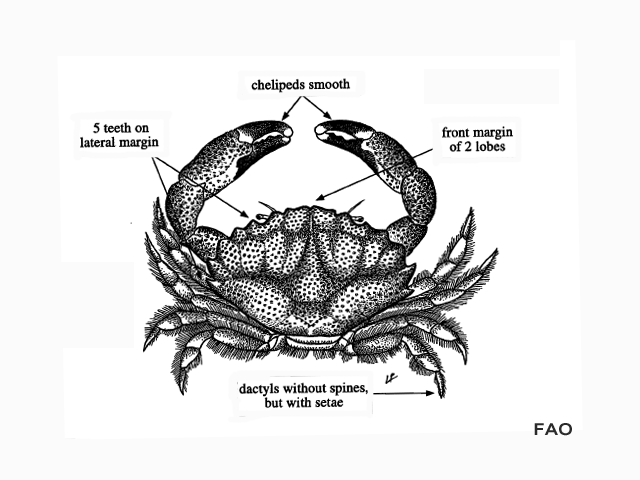| Xanthidae (stone and mud crabs) |
| 8 cm CW (male/unsexed) |
|
reef-associated; marine; depth range 0 - 95 m |
| Indo-Pacific: South Africa to Hawaii. |
|
Carapace distinctly broader than long, surfaces very smooth; anterolateral margin with 5 lobiform teeth (first 2 teeth never spine-tipped). Chelae very long in adults, reaching or almost reaching maximum width of carapace. Color: quite variable, from dark grey to reddish brown, often with a patchwork of grey and dark brown. One of the most distinctive memebers of the genus because of its very broad and smooth carapace with lobiform anterolateral margins, and the elongate chelipeds. |
| Occurs from the intertidal zone to a depth of about 20 m (Ref. 343). Subtidal on rocky areas (Ref. 801). Inhabits reefs especially on disturbed reef flats (Ref. 343) or in areas exposed to currents (Ref. 801). |
|
Not Evaluated (N.E.) Ref. 123251)
|
|
|
Source and more info: www.sealifebase.org. For personal, classroom, and other internal use only. Not for publication.

